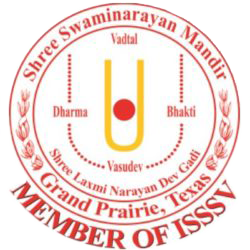Diwali also known as the “festival of lights”, is a five day festival which starts on Dhanteras, followed by Kaali Chaudas, Diwali, New Years Day and ends on Bhaibeej.
Dhan Teras
First of the 5-day Diwali celebration
- Dhan=wealth, Teras=falls on the 13th day of the month Aso
- Houses are cleaned and decorated to welcome Laxmiji-Goddess of wealth
- Lamps are also lit to welcome Laxmiji, and houses are decorated with rangoli’s
- In village’s cattle are adorned and worshipped as they are their, main source of income.
Kali Chaudas
Second of the 5-day celebration
- Falls on the 14th day of the dark half of the month
- We sing Hanmanji’s arti and do his puja for protecting us from evil spirits
- Coconuts and ladhus’s made of sesame seeds, rice and ghee are offered to Hanumanji
Laxmi Pujan and Diwali
Third of the 5-day celebration
- The word ‘Diwali’ comes from the Sanskrit word ‘Deepavali’ – Deep=light Avali=row
- The day celebrates Ram Bhagwan’s journey back to Ayodhya after 14 years of exile
- Also celebrates Ram Bhagwan’s victory after killing Ravan and rescuing Sitaji
- Devotees of Ram Bhagwan lit lamps to direct him back to Ayodhya, and made rangoli’s to celebrate the joyous occasion
- Laxmiji only enters those houses which are clean, decorated with lamps, rangoli’s and are pure
- Also known as, Chopada pujan- Businesses and home accounts are balanced on this day and a pujan is down for Laxmiji to thank her for her presence and blessings
- Lord Shri Krishna left his mortal form on Earth on this day
Story
A princess lost her necklace, and poor woman found it but did not know who it belonged to. The news of the necklace spread and the king said that whoever found out would get a reward. Hearing this poor woman went to the palace to handed it in, when the king offered the reward, the woman refused and said she only did her duty by returning the necklace to the owner, but she requested that no one in his kingdom should light a lamp on this day except her. By midnight, Laxmiji found only her house lit up with lamps and knocked on her door, when she saw the poor woman, she asked her what she wanted, and the woman asked Laxmiji to never leave her house.
Ankooth – Bestu Varas
- The fourth day is known as ‘Padwa’, which marks the coronation of King Vikramaditya and vikram-samvat was started from this day.
- Govardhan puja- the people of Gokul used to do puja of Indradev at the end of each monsoon season, one particular year, the young Krishna stopped them from doing so. Indradev got angry and made it rain so much for 7 days, Krishna saved Gokul by lifting the Govardhan Mountain with his little finger on his left hand so that everyone could shelter under it.
- The monsoon season brings new harvest, which is used to make the ankoot. As our Shastra’s say we should always offer food to Bhagwan before we eat it our self.
- A mountain of different foods, sweets and savories are made for Bhagwan and put before him, Bhagwan is dressed in beautiful garments and jewellery
- On this day we should greet family and friends by saying Jay Swaminarayan to them.
‘Nutan Varsh’ literally means ‘dawn of the New Year’, also called ‘Bestu Varsh’. The Hindu New Year’s day, of the Vikram era is Kartik sud 1.
Bhai Beej
- The fifth and final day of the celebration
- Bhai=brother, beej=2nd day of the bright half of the month Kartik
- Legend goes that Yamunaji (divine form of the River Yamuna) invited her brother Yamraj for a meal to her home quite often, but it was on this day that he was able to accept the invitation. Yamunaji was pleased and welcomed him by performing arti and putting a tilak on his forehead. She then served him with an elaborate meal. Yamraj was so pleased with his sister that he blessed her and granted her a boon; he said ‘a brother who has a meal at his sister’s house on this day shall have eternal happiness’.

